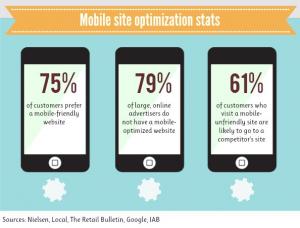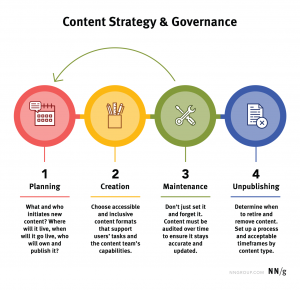
Source: Freepik
In today’s competitive digital landscape, your website is your online storefront. It’s the first point of interaction between you and your customers. Needless to say, people develop a first impression about you and what your business stands for based on their interactions with your website. So, the content on your website is a crucial factor in attracting and retaining customers. But that’s not all. The content has to be optimized so that it can be discovered by search engines.
If you’re wondering how to write website content that attracts search engines and visitors to your website, this blog is for you. We’ll discuss how you can drive more traffic to your site, engage with users, and achieve online goals. So, let’s take it from the top.
What is Website Content?
The answer is simple. Website content is the content on various pages, such as the Home Page, About Us, Services / Products, Blogs, etc. Generally speaking, it’s the information you provide to people about your business, products, and services that enable them to choose you over your competitors.
Therefore, your content needs to be:
- Easy to understand
- Captivating
- Informative
- Answer’s a visitor’s search intent
- Persuasive enough to compel a visitor to take action
- Search engine optimized
Now that you have a clear idea of what is expected of you, here are a few tips that can help you write killer content.
Tips On How To Write Website Content
Tip #1: Know Your Audience
Recognizing your target audience allows you to create content that your customers will want to read and ultimately persuade them to make a purchase. You need to determine who they are, what their issues are, what services they need, how they prefer to communicate, and much more.
So, how can you learn everything about your potential customers?
Simple- audience analytics tools. These tools can help you learn more about your online target audience and create a buyer persona of your ideal customer. By researching and profiling your consumers, you can categorize them based on demographics, preferences, pain points, income levels, previous purchase history, etc. This enables you to craft content that resonates with their needs.
For example, you can alter the language or tone depending on who you are targeting (age, gender, profession, etc.) to make your content relatable and more impactful with that demographic. Here is an example of how companies like Amazon, Walmart, Target, etc., utilize demographic details to target their audience.

Tip # 2: Clearly State Your Objective
Every time you upload content on your website, you should have a purpose in mind, such as providing information, building brand awareness, entertaining, collecting more qualified leads, re-engaging former customers, driving a customer towards a conversion, etc. Knowing what your objective is enables you to create content accordingly. Moreover, it’s more likely to achieve its purpose, contributing to the success of your business.
Writing content for a website can be challenging, even for the best of writers. However, if you focus on setting the tone and style of your piece, the task can get a lot easier. Keep the following aspects in mind:
- What is the purpose of the content? Do you plan on informing, entertaining, or persuading your target audience?
- Identify who the audience is. Your content is only effective if it engages the reader.
- Ensure your content is relevant, useful and provides value to the reader.
- What action do you want the reader to take after reading the content?
Tip #3: Planning and Research
When learning how to write web content, do not overlook the importance of Search Engine Optimization (SEO). Scattering SEO-friendly words into your content is one of the easiest ways to ensure your content remains relevant to your target audience and appears in search queries.
You must begin by identifying keywords that rank well on search engines and integrate them seamlessly into your content. Again, several helpful tools make it easy for content creators to find the right keywords.
For example, Google Trends is a free keyword tool that helps filter keywords by location, category, and other criteria. You can even easily compare keyword variations to see which is getting more traffic.

However, the goal is to optimize your web content for SEO without sacrificing its quality. If Google’s algorithms find your website guilty of keyword stuffing, you may be penalized, or worse, Google may remove you from SERPs (search engine results pages), causing you to lose users.
Tip #4: Craft Compelling Content
Now, the fun part – how to write content for your website.
As mentioned earlier, there are different types of content you will be using on your website. This tip is aimed specifically at content for blogs.
The first thing to do is to write a catchy headline. Think of it as a gatekeeper – either visitors will be interested in reading your content or bounce away. You want the headline to hook readers from the get-go so that they are compelled to explore further. Clear, concise headlines work best, especially ones that evoke curiosity while promising value. Remember to use keywords in your headline to boost search engine visibility.
Next, craft a powerful introduction that holds the reader’s attention. Don’t forget that your introduction will set the tone for the entire piece, so keep a balance between engaging the reader and offering relevant snippets of information about what the blog is about. Effective ways of drawing a reader into your piece include asking a question, stating an interesting fact, or quoting a renowned person.
Now that you’ve set the scene, it’s time to tell your story. Content that arouses deep emotional connection is definitely a success. So aim at writing a compelling story that resonates with your audience and provides valuable information to them. More importantly, write with authority and authenticity to develop a long-term, strong relationship with your potential customers.
Rule #5: Focus on Providing Value
Your content should always be original. There is no room for plagiarism. You’re probably already aware of that. So your efforts should be on providing valuable information that engages your readers, whether to educate, entertain, or inspire them to take action by clicking on the CTA. However, do not try to oversell by excessively promoting your products or services.
The more engaged a person is with your website content, the more likely they are to comment or share it with others. However, the level of engagement readers have with your web content has many benefits. Google takes note of this metric and improve your brand’s online visibility on SERPs. Also, the comments and feedback help you gauge how people feel about your products, as well as their opinions on relevant issues, pain points, and preferences. So, your content can encourage customers to develop a community around your brand, building loyalty.
Rule #6: Prioritize Readability and Scannability
Remember that you are catering to an online audience. Research suggests online readers have short attention spans and are easily distracted. According to Golden Steps ABA, attention spans are shrinking. In the last two decades, it’s decreased from 12 seconds to 8.25 seconds. That means you need to make it easier for your target audience to consume and engage with your content.
If you want to encourage people to read your content while on the go or sneak in a glance on their lunch break, focus on readability, scannability, and legibility.

While you are at it, keep these tips for writing content for website in mind:
- Avoid writing large blocks of text. Instead, use short paragraphs, incorporating subheadings and bullet points to break up the text into snackable content.
- Use concise sentences so people can understand what you’re saying.
- Your website content writing should be a clean, simple font that makes the text easy to read, even on small devices.
- Incorporate visuals such as images, videos, infographics, charts, graphs, etc., to enhance interest in your content.
- Make sure the contrast between the text and background is high for optimal legibility. While the black text on a white background is the best option, you can play around with color schemes that support legibility.
Tip #7: Optimize for Mobile
A lot of the browsing nowadays is done on mobile devices. In fact, a whopping 92.3% of internet users access the internet with mobile phones. So, if you want your content to be read, it only makes sense to optimize it for mobiles. But it’s not only about improving online experiences for humans. A mobile-optimized website also positively impacts your search engine rankings. Look at the number below, and you will have a clear picture of what we are talking about.

You now know the whats and whys, just keep these essential aspects in mind, and you are good to go:
- Implement an easy-to-read format.
- Use shorter paragraphs, about 2 – 3 sentences per paragraph. However, keep the content simple and informative.
- Ensure the content is responsive and loads quickly.
- Make your content display seamlessly across various screen sizes and platforms.
- Test your website content on different devices to make sure it offers a consistent, user-friendly experience.
Tip #8: Develop a Content Strategy
Create a well-thought-out content strategy to ensure you continuously generate useful, usable, and effective content. Moreover, it should highlight topics you plan to discuss and the desired outcomes of the content.
While you focus on creating new content for your website, it’s also crucial to take inventory of the content you already have. Audit and analyze the content to understand what is and isn’t working for your readers, outdated content, gaps in knowledge you are providing, opportunities to improve existing content, etc. This ensures that all the content on your site is of top-notch quality.

Over to You
By now, you probably have a better idea of how to write website content that helps capture and retain the attention of people who visit your website. More importantly, you’ve discovered a few secrets to make your content show up on search queries.
It’s time to elevate your website content from mundane to magnetic. So, are you ready to put the tips mentioned above into action?